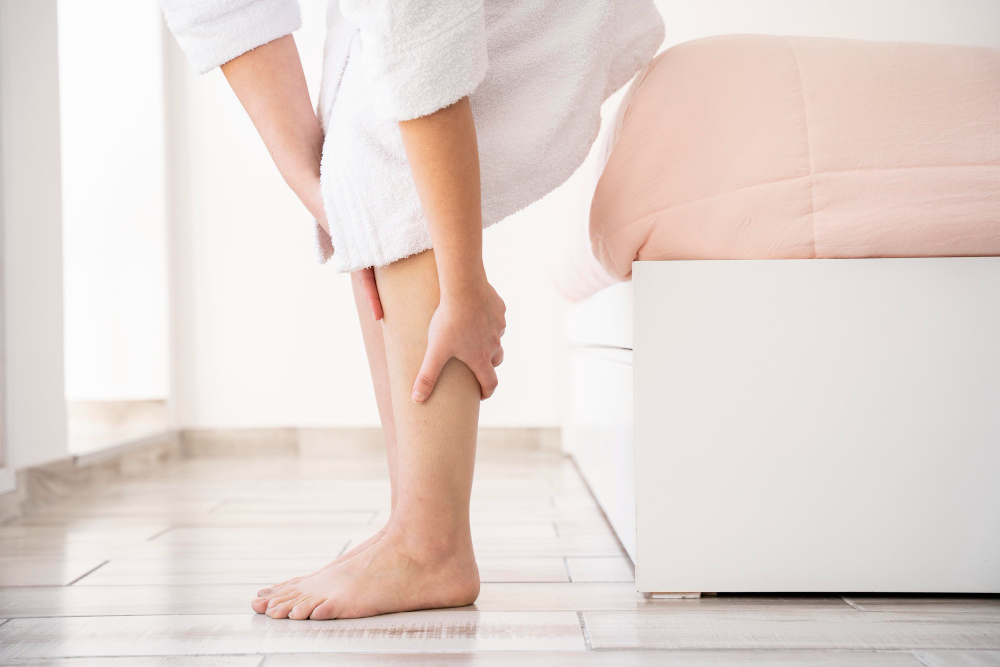- Spider veins are dilated blood vessels near the skin’s surface, often found in the legs and face.
- Risk factors for developing spider veins include genetics, hormonal changes, age, obesity, and prolonged sitting or standing.
- Lifestyle changes, such as wearing compression stockings and maintaining a healthy weight, can prevent spider veins.
- Professional medical treatments, like laser therapy and radiofrequency ablation, can reduce spider veins’ appearance.
- Natural supplements, such as horse chestnut and grape seed extract, can help treat spider veins but should be used under a health specialist’s guidance.
Spider veins are a common and misunderstood condition affecting many people, particularly women. Although they are usually harmless, they can cause discomfort, embarrassment, and other issues. Fortunately, there are many ways to manage and treat spider veins, from lifestyle changes to medical procedures. This comprehensive guide will explore what spider veins are, what causes them, and how to prevent and treat them.
What are Spider Veins?
Spider veins, also known as telangiectasias, are small, dilated blood vessels that appear near the skin’s surface. They are usually red or blue and have a spiderweb-like pattern. Spider veins can occur anywhere on the body but are most commonly found on the legs and face. Unlike varicose veins, which are larger and more raised, spider veins are usually flat and do not bulge.
Risk Factors
There are various risk factors for developing spider veins. Here are some of them:
Genetics
Genetics plays a significant role in your risk factor for spider veins. If your parents or grandparents had spider veins, you are more likely to develop them. You may inherit a predisposition for weak vein valves, which can eventually lead to spider veins if not addressed. If you have a family history of spider veins, it is essential to take preventative measures, such as wearing compression stockings and avoiding long periods of standing or sitting.
Hormonal Changes
Hormonal changes can also contribute to the development of spider veins. Pregnancy, menopause, and birth control pills can all cause hormonal fluctuations that weaken vein valves, leading to spider veins. During pregnancy, the pressure from the growing uterus can also compress the veins in the pelvis, leading to spider veins. Women are more likely to develop spider veins than men, primarily due to hormonal changes.

Age
As you age, your veins may lose elasticity, causing vein walls to weaken, leading to spider veins. Age-related changes and other risk factors, such as genetics and prolonged sitting or standing, can increase one’s risk of developing spider veins.
Obesity
Obesity is another significant risk factor for spider veins. Excess weight puts pressure on the veins in your legs, leading to weakened vein walls and valve failure. Losing weight can help reduce the pressure on your veins and improve your overall health. Maintaining a healthy weight can also prevent other health issues, such as high blood pressure, which can further damage vein valves.
Prolonged Sitting or Standing
Prolonged sitting or standing can cause spider veins, as the lack of movement in your legs can cause blood to pool in your veins. If you have a desk job or spend many hours on your feet, taking breaks and moving around to improve circulation in your legs is essential. Wearing compression stockings can also help improve circulation, reducing your risk for spider veins.
Dealing With Spider Veins
Thankfully, there are various ways to deal with spider veins. Here are some of them:

Vein Treatment
Those with spider veins can get professional treatment to get it removed. An experienced vein specialist can use various techniques to treat spider veins, such as sclerotherapy or laser therapy. For sclerotherapy, a doctor injects a solution into the affected vein, causing it to collapse and eventually fade away.
Laser therapy is used to reduce the appearance of spider veins using pulses of light energy. Both treatments are safe and effective ways to get rid of spider veins.
Compression Stockings
Compression stockings are often used to treat and prevent spider veins. Compression stockings help improve circulation in your legs, reduce pressure on the veins, and prevent blood from pooling. Wearing compression stockings daily can help decrease spider veins’ appearance over time.
Radiofrequency Ablation
Radiofrequency ablation (RFA) is a minimally invasive procedure that leverages heat energy to close the veins. A small, flexible catheter is introduced into the affected veins, after which radiofrequency waves destroy the lining of the veins, causing them to close, and naturally the blood flow re-routes to unaffected veins. The treated veins will gradually disappear, and the symptoms vanish shortly after treatment.
Natural Supplements
Some supplements, such as horse chestnut extract, grape seed extract, and butchers broom, can help treat spider veins. These supplements are known to improve circulation, strengthen the walls of the veins, and reduce inflammation around the affected areas. Before considering any supplement, you should consult a health specialist to ensure that you will not have any adverse effects.
Spider veins are a common and often misunderstood condition, but various treatments are available to address them. While lifestyle changes, such as maintaining a healthy weight and wearing compression stockings, can help prevent the development of spider veins, professional medical treatments can also be used to reduce their appearance. Before pursuing any treatment option, you must discuss the best option with your healthcare provider.

